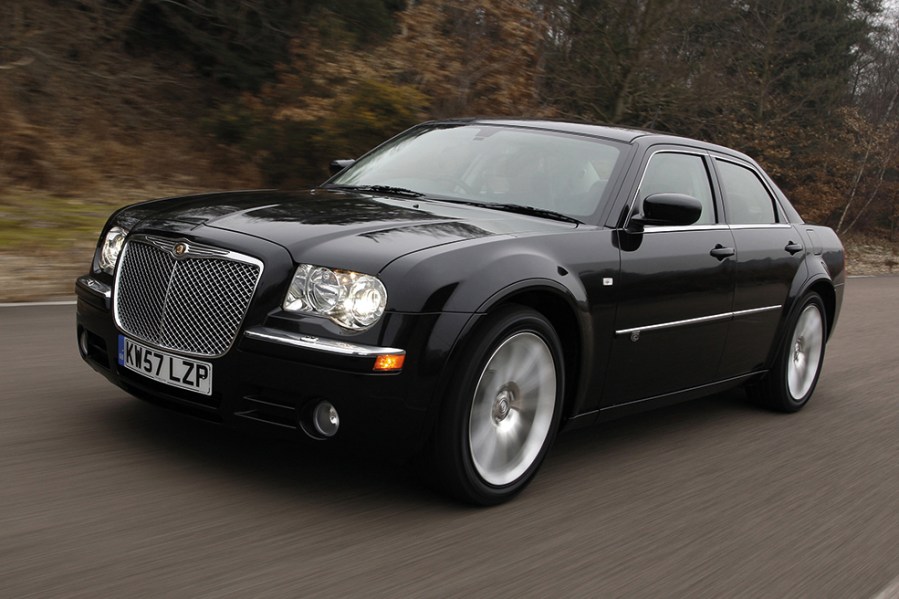With an interesting combination of Mercedes componentry and American attitude, the Chrysler 300C is a unique modern classic proposition
Words: Craig Cheetham Images: Chrysler
Sponsored editorial in association with Lancaster Insurance
In the autumn of 1998, the global car industry forged its biggest ever transatlantic collaboration with the formation of the DaimlerChrysler Group: America’s third biggest car maker, Chrysler, joined forces with Europe’s third-in-line, Daimler AG.
It was a fascinating merger of equals, buying Daimler critical access to US manufacturing facilities to develop models such as the upcoming Mercedes-Benz ML-Class SUV, along with substantial presence at retail sites across the USA for its Mercedes-Benz brand, along with some strategic alliances that would see Chrysler get access to Daimler’s star assets. These ranged from its proven engine range to its vehicle architectures, which saw models such as the Dodge Sprinter van, based on the Mercedes of the same name, and the Mercedes SLK-based Chrysler Crossfire coupe.
The Chysler 300C, however, was one of the more unusual offerings. It made its debut at the 2003 New York International Auto Show and was styled by a young designer called Ralph Gilles, who was just 32 when it appeared on the show stand. Today, Gilles is head of design for Stellantis Group – owners of Fiat, Peugeot, Citroen and Vauxhall, among others.
The 300C was broadly well received despite its inherent weirdness – here was a car that had the rear-view mirror presence of a Rolls-Royce Silver Shadow, but with added gangster-rap appeal. In fact, its design was intended as a modern interpretation of the 1955 Chrysler C-300.
In the USA, the Chrysler 300C was an instant hit. It became a big hit within music culture and was also respected for being a refined and comfortable luxury car – even if it was a bit of an anachronism.
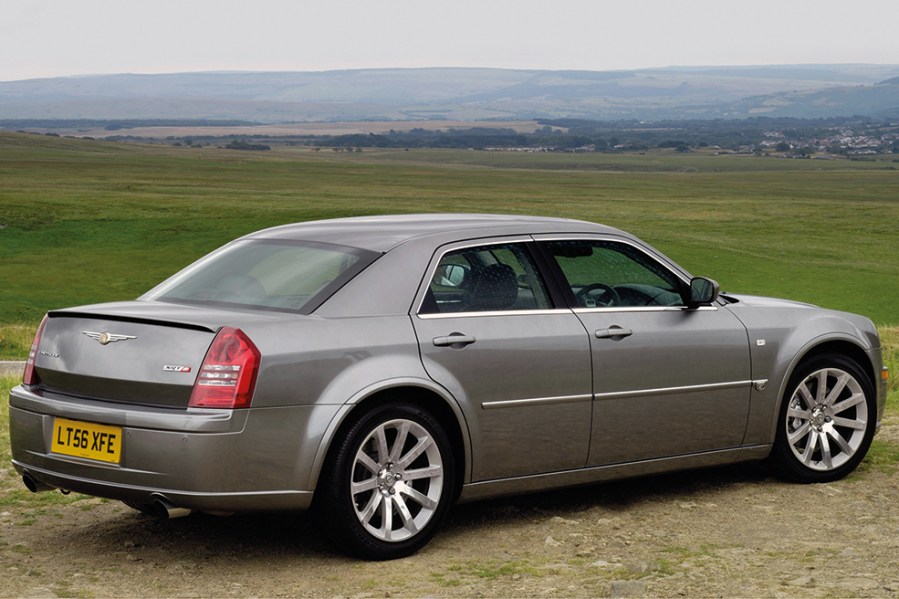
What came as more of a surprise was the decision to launch a Chrysler this big in Europe, including right-hand-drive models for the UK built on Chrysler’s behalf by Magna-Steyr in Austria.
The Chrysler 300C went on sale in the USA in 2004 and in the UK in 2005. Three versions were initially offered: the first was a rather underwhelming 3.5-litre V6 petrol model with a powertrain derived from a Mercedes engine, which may have performed well in an E-Class but found itself a bit lost in a massive Chrysler.
Of far more interest, but less common, was a lively 5.7-litre V8 Hemi model, so-named because of the unit’s hemispherical combustion chambers. It turned the Chrysler 300C into a true American land yacht.
The most relevant engine for the UK, however, was the 3.0-litre CRD common-rail diesel that Chrysler had purloined from Mercedes. This was essentially the Mercedes 270CDI unit bored out and integrated into the Chrysler architecture – itself no massive challenge, as a lot of the chassis and sub-assemblies of the 300C were partially E-Class based. The CRD powertrain still offers commendable economy, coupled to impressive torque – 215bhp and an astonishing 510Nm.
Further changes were made to the 300C lineup in spring 2006. In came the 425bhp 6.1-litre SRT-8 muscle car and at much the same time a Touring estate version was added, which had a low roof and not a huge amount of extra practicality.
In February 2008, the 3.5-litre petrol V6 was dropped and at the same time an SRT-Design diesel variant added to the range, which brought a little of the flagship SRT-8 model’s over-the-top styling to the more sensible model. There were also some tweaks inside to give the cabin a more up-market feel, plus revised rear light clusters.
A final facelift came in 2011 by which time Daimler and Chrysler had gone their separate ways, with the American brand merging with Fiat to become Fiat-Chrysler Automobiles. This move led to the arguably ill-judged decision to sell the 300C as the Lancia Thema in some markets.
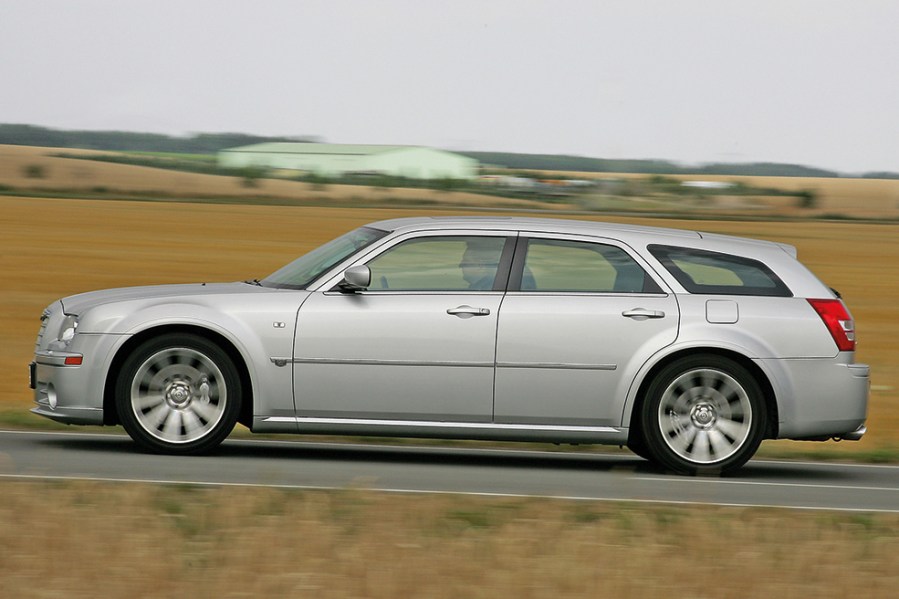
Chrysler 300C Values
Petrol and diesel V6 300C examples seem to be very close in price, but there’s a different appeal to either. The petrol models are much rarer, and post-2006 are significantly more expensive to tax, so their descent into bangernomics territory won’t be a pretty one.
The CRD is a much better bet – at £2000 upwards for something nice or even less for a rough example, it’s a lot of flash for the cash. Later examples, post-2008, are generally more but unless you have to have one, there’s no real benefit – better to find a really good older example and pay less.
Hemi V8 cars are generally more desirable and are definitely an enthusiast purchase rather than a viable daily commuter. The SRT-8, meanwhile, is a performance car with a following of its own with prices to match – expect to pay over £10,000 for a good example.
Insurance Costs
2006 Chrysler 300C 5.7 HEMI, £9000 value.
Example quote: £385.00 or £403.00 with Agreed Value.Quotation supplied by Lancaster Insurance. Tel: 01480 400761
Quote based on a 45-year-old marketing manager, access to another car, no claims or convictions, club member, 3000 miles per year, no modifications, living in SP2 0HL. Disclaimer: Subject to underwriting criteria. An additional charge may be payable. Authorised and regulated by the Financial Conduct Authority.
Bodywork
Overall, the Chrysler 300C is a pretty rust-resilient car, or at least has proven to be so far with the earliest examples now the best part of two decades old.
Interestingly, Austrian-made models seem to be far more resilient than the outwardly identical US-market models, with owners stateside reporting rear wheel arch corrosion as quite a common problem.
European models use a different sound-deadening material that doesn’t withhold dampness in the same way, and while so far it seems fine, it’s worth being aware of this just in case it becomes the starting point for rust later in the model’s life.
Otherwise, the primary checks are the general and usual ones really – look for accident damage, uneven panel gaps and damaged plastic trim, which can be more expensive to repair than you might imagine.
Engine and transmission
By far the most common engine in the UK version of the Chrysler 300C is the Mercedes V6 diesel, which is a refined and punchy unit with a reasonably good reliability record.
There’s one well-known and quite alarming problem to be aware of though, which affects only cars built between 2005 and 2007. The inlet manifold can corrode internally and suck its innards into the engine, with potentially disastrous consequences. If you buy an early one and discover it still has its original manifold, then it would be sensible to change it, to be on the safe side.
Another common fault is random stalling, which is usually down to a faulty crank position sensor. Again, an issue more common on early cars. In fairness to the 300C, though, the common problems list is much shorter than it is on many modern cars.
Both petrol engines have an impeccable reliability record, apart from the 3.5 V6 having a tendency to burn out coil packs.
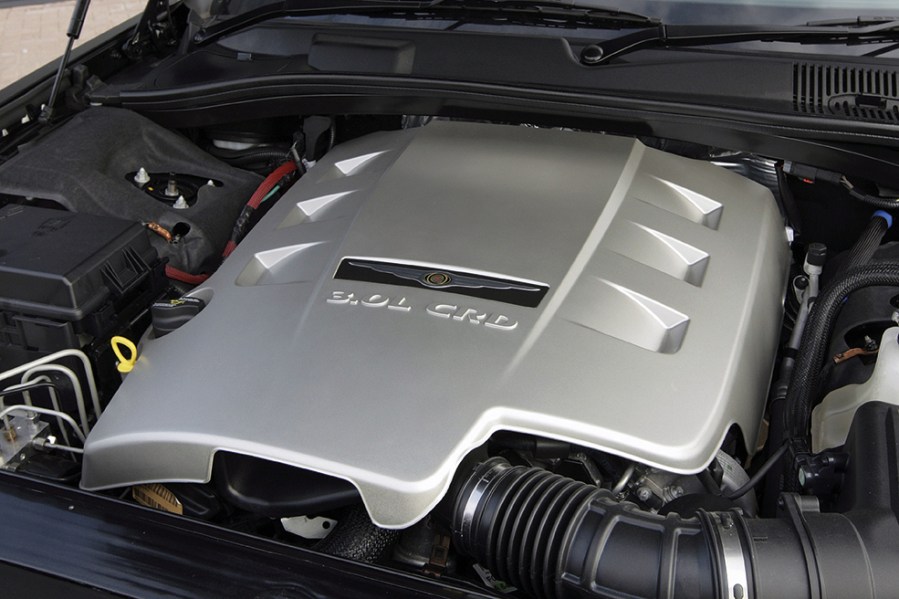
Steering, suspension and brakes
By far the most common fault on the 300C, regardless of engine, is a knocking from the front suspension, which usually becomes apparent from about 50,000 miles and never really seems to go away.
Replacing the anti-roll bar link bushes can help and tends to shut thing up for a while, but it’s generally accepted that it’s the front arms themselves that wear around the bushes, and after a while the noise comes back.
You can cure it by renewing the arms themselves, or alternatively sourcing some larger diameter bushes – Land Rover Discovery 2-spec Polybushes are a common conversion, with the added benefit of no future wear.
Other things to look out for are the wiring loom rubbing through where it runs parallel to the aircon pipes under the bonnet, which can cause problems with the braking system and random over-functioning of the ABS, leaks from a T-piece connector on the transmission that can cause loss of drive, and a non-functioning parking brake – seized actuators can be a problem, especially if you choose to leave the car in Park and not apply the brake.
Interior, trim and electrics
Not a lot goes wrong inside the 300C, which is a well-equipped and luxurious car, albeit one that could be considered a bit gauche.
Don’t go expecting high-end European quality either. Chrysler may have been in bed with Mercedes-Benz when the 300C was conceived, but the American genes won out, so some of the plastics are a bit cheap feeling and the steering wheel is the size of a dinner platter.
It’s not the most tactile car to drive, but it’s insanely comfortable with terrific ride comfort and acres of legroom.
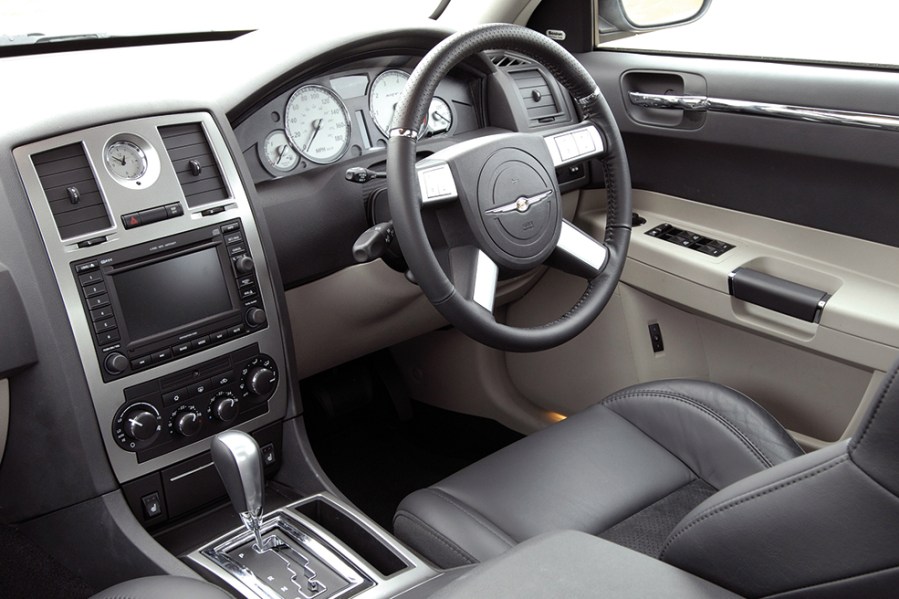
Chrysler 300C: our verdict
It may not have the cachet of a Mercedes E-Class or Jaguar XJ but the Chrysler 300C remains a desirable alternative to the modern-classic executive mainstream regardless. Great looks, loads of space and excellent long-distance comfort combine in a pretty interesting package – as do solid engines and decent resistance to rust
MODEL TIMELINE
2003
Chrysler 300 Concept, based on W211 Mercedes E-Class, is revealed to critical acclaim.
2004
300 production starts at Brampton Plant in Ontario, Canada – available engines are a 2.7-litre V6 (US only), 3.5-litre V6 and 5.7-litre HEMI V8.
2005
European and UK sales begin, branded 300C and also offering Mercedes OM642 3.0-litre diesel V6. Touring estate model also offered.
2006
SRT-8 model launched, sporting 425bhp 6.1-litre V8, 20-inch wheels, lowered suspension and bodykit.
2008
Minor facelift, comprising new grille and lights outside, updated ‘infotainment’ and materials inside. 3.5-litre petrol V6 was dropped, SRT-Design diesel variant added to the range.
2011
First-generation 300C production ends, new model on new (albeit closely related) platform replaces it.

